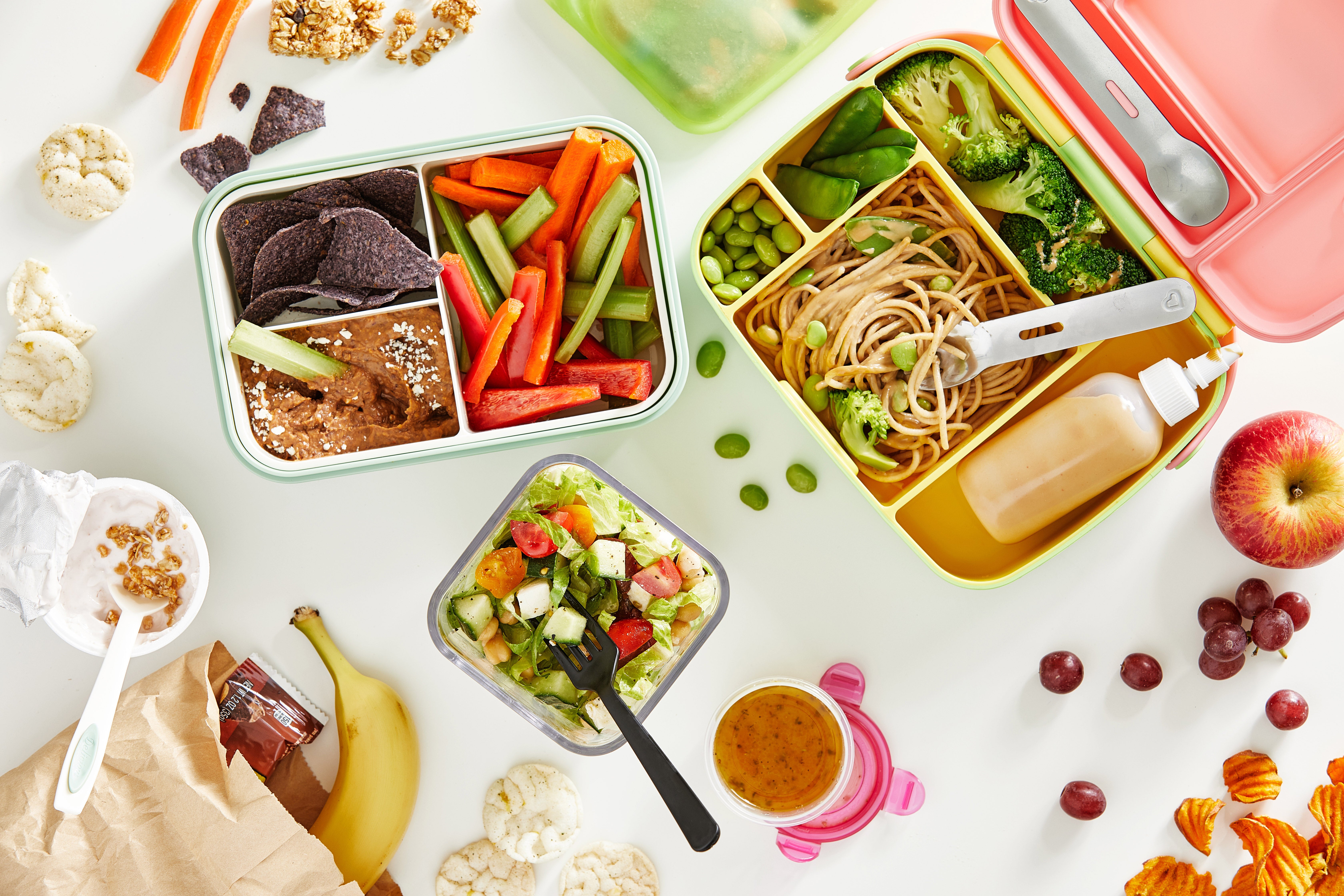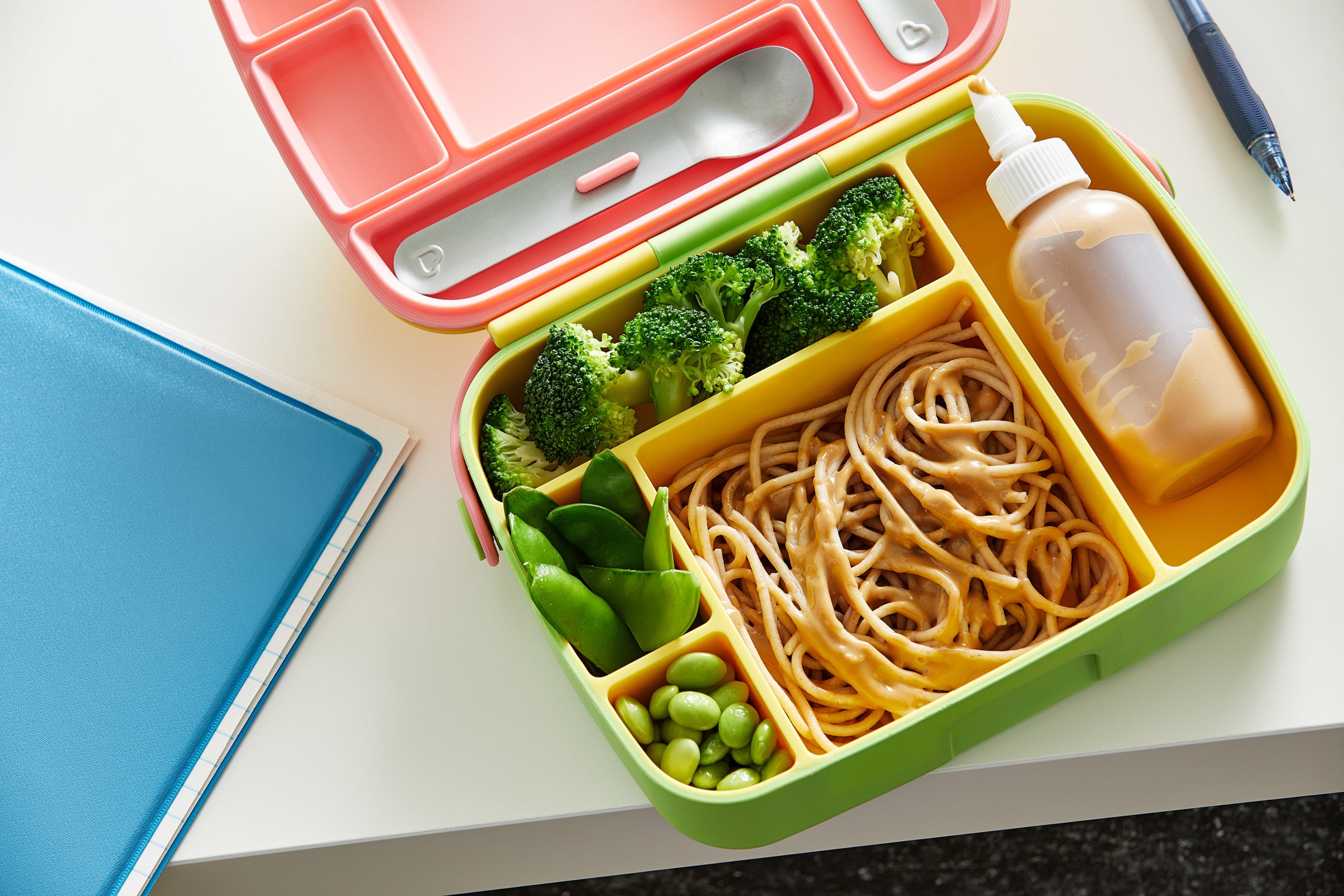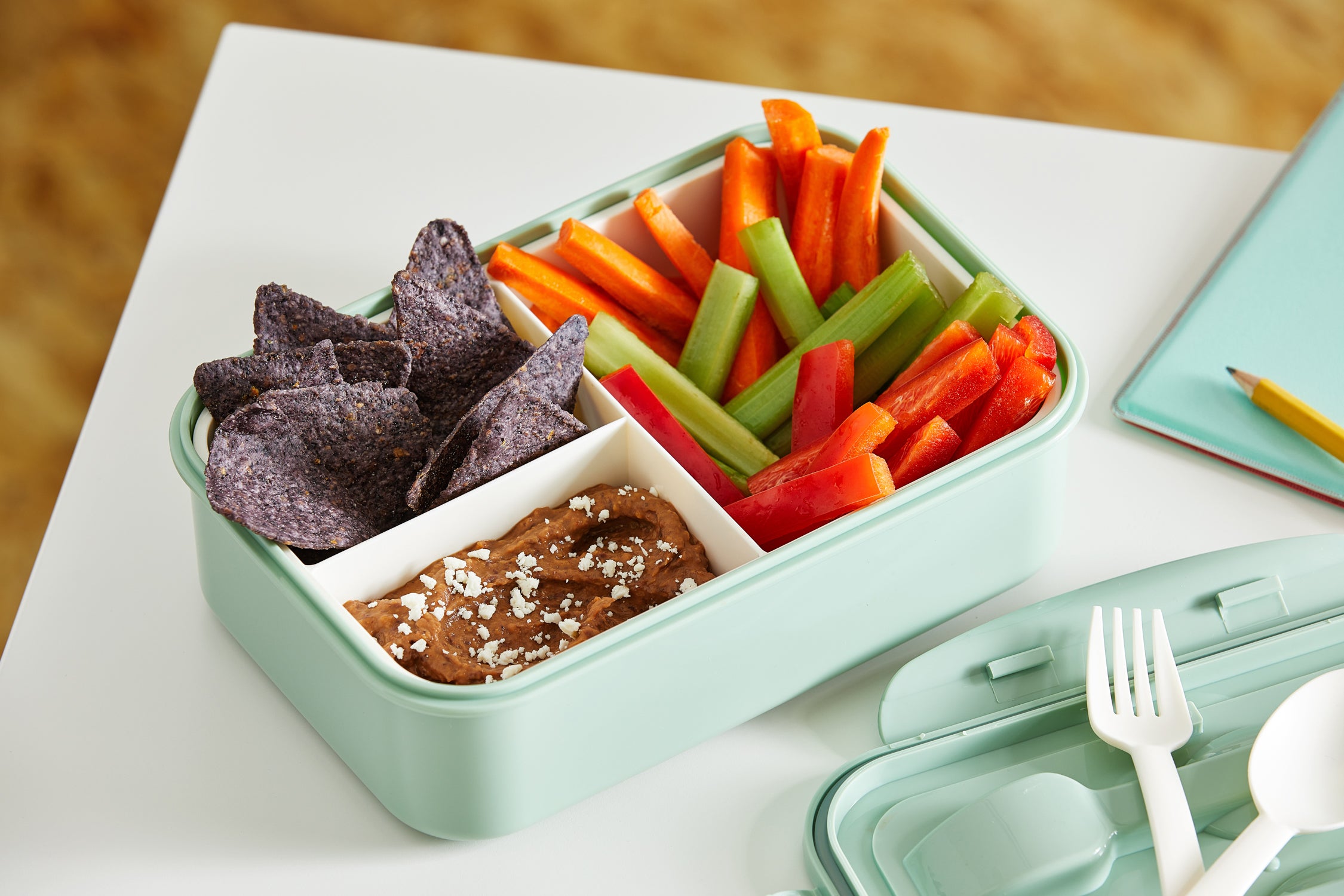How to make healthy school lunchboxes fun
Ellie Krieger repurposes some clever marketing strategies to make lunchboxes kids will actually be excited about. The selling point? Give them some control

Marketing food to kids is usually seen in a negative light, a way to get them to pester their parents for what is usually ultra-processed, nutritionally lacking food. But apply those same sales principles to wholesome, homemade meals, and they become a force for good, flipping the arrow towards healthful choices. Marketers know what motivates kids – they spend billions annually trying to figure it out – so why not borrow a few of their tactics? That’s exactly what these action-packed lunchboxes do.
One of the most effective ways to reach kids is to tap their desire for control. Putting them in the driver’s seat around food (with appropriate guidance, of course) gives them a sense of autonomy and investment, making them more likely to want and enjoy what they are eating. Gardening and cooking with kids are well known ways to foster such agency, but the possibilities don’t stop there. Every step of the meal process is an opportunity for engagement – the more hands-on the better.
These lunchbox ideas are designed to maximise that involvement, putting power into the child’s hands by making the meal itself a playful, action-oriented experience. Each is based on an activity for them to do right before or while eating, but there are a multitude of ways to involve them well before that point. Each primes the kids for when they open their lunchboxes and the real fun and deliciousness begin.
Squeeze
Here, a savoury sunflower butter sauce (think peanut sauce but nut-free) is packed in a small bottle for squeezing as much (or as little) as you like onto the noodles and vegetables packed in the separate containers. The sauce is so good, you might be tempted to squeeze it directly into your mouth! An empty honey or small ketchup bottle works perfectly, or you can buy a small condiment container – just make sure it has a sealable lid. The sauce is easy to make, so it’s ideal for prepping with children. And they can personalise their lunch by choosing any type of noodle or vegetable they like.
Roll
Roll-up sandwiches are always a win, but they somehow taste better when you get to roll them yourself in the moment, with ingredients you choose. Let your child help decide which elements to include. You’ll need some kind of wrapper – one large tortilla or two small ones, or a couple of slices of wholegrain bread flattened with a rolling pin (be sure to pack the wrapper in a zip-top bag so it stays pliable). In another container, pack the filling elements – all thinly sliced or shredded for easier layering and rolling – such as slices of turkey or ham, cheese, shredded vegetables such as carrot, and cabbage and lettuce leaves with the ribs removed for easy rolling. Add a small container or packet of whatever sandwich condiment your child prefers, along with a utensil to spread it. Also include a paper plate or large square of foil where your child can layer and roll up their creation.
Dip
One of the best things about dip is that the dipper becomes the utensil, so you get to eat with your hands. This lunchbox centres on a creamy chili-lime-seasoned black bean dip, which can be made as mild or as spicy as you like. The dip itself is fun to make with kids – it’s especially eye-opening for them to see how it comes together in the food processor. You can use another type of bean, such as pinto or kidney, to make this dip, or you could substitute shop-bought hummus. As for the dippers, the sky’s the limit. Let your child choose whatever array of vegetables they prefer, plus crunchy, wholegrain chips or crackers.
Stack
Create a homemade Lunchables-style box with a variety of foods all cut around the same size so they are easily stackable (you can use a small cookie-cutter or glass to cut many of the items to about the size of the cracker). Some ingredients to include: wholegrain crackers, slices of cucumber, cheese, hard-cooked eggs, turkey, ham, roast beef, marinated tofu, green apples, strawberries and so on. Pile each into individual muffin liners in the lunchbox so they are ready to be mixed and matched at lunchtime.
Shake
This lunch is a salad layered into a clear container, so it looks like a work of art. Encourage your child to make their own colourful creation, choosing whatever vegetables and proteins inspire them. The Italian dressing here is a sure win, but that is easily exchangeable, too. When your child opens their lunchbox at school, they can pour the dressing over the salad, reseal it (tightly!) and shake, shake, shake to combine, then eat it right out of the container.
Along with these ideas, as you get into the rhythm of the school year, keep in mind that another effective tool marketers use to reach kids is the influence of role models. You might not feel like you can compete with the cartoon characters and professional athletes in commercials, but the example you set has a more profound impact than you may realise. With that, as you pack your child’s lunch, consider packing yourself one, too and, whenever possible, sit down and enjoy lunch together.
Vegetables and noodles with sunflower butter sauce

Serves: 1 (makes about 350ml of sauce)
Time: 10 minutes
Storage notes: Refrigerate leftover sauce for up to 3 days.
Ingredients:
For the sauce:
200g creamy sunflower butter (not unsweetened)
3 tbsp rice vinegar
2 tbsp low-sodium soy sauce
1½ tbsp finely grated fresh ginger
1 tbsp honey (optional)
6 to 8 tbsp water
Sriracha, as needed
For the lunchbox:
200g cooked and chilled soba noodles or wholewheat spaghetti
45g blanched and chilled broccoli spears
50g blanched and chilled snow peas
40g cooked and chilled shelled edamame
Method:
Make the sauce: in a medium bowl, whisk together the sunflower butter, vinegar, soy sauce and ginger until combined. Taste, and if desired, whisk in the honey until combined. Whisk in the water, a couple of tablespoons at a time, until the sauce is creamy and to the desired thickness. Stir in sriracha, to taste. You should get about 350ml of sauce; you will need 4 to 5 tablespoons for the lunchbox. Refrigerate the leftover sauce until needed.
Make the lunchbox: add about a quarter of the sauce to a food-safe squeeze bottle with a secure lid. In a container with a lid, arrange the noodles, broccoli, snow peas and edamame. Place the sauce and the vegetable-noodle mixture in a cooler-style lunchbox with an ice pack. Right before eating, squeeze the sauce over the noodles and vegetables.
Nutrition information per serving (1 lunchbox, using soba noodles and 4 tablespoons sauce) | calories: 516; total fat: 29g; saturated fat: 3g; cholesterol: 0mg; sodium: 527mg; carbohydrates: 50g; dietary fibre: 7g; sugar: 12g; protein: 22g.
This analysis is an estimate based on available ingredients and this preparation. It should not substitute for a dietitian’s or nutritionist’s advice.
Chilli black bean dip

Serves: 1 (makes about 375g dip)
Time: 20 minutes
Storage notes: Leftover dip can be refrigerated for up to 3 days.
Ingredients:
For the dip:
2 tbsp olive oil, divided
½ medium yellow onion (115g total), diced
1 clove garlic, minced or finely grated
1½ tsp chilli powder
¼ tsp ground cumin
⅛ tsp ground coriander
One (425g) tin black beans, drained and rinsed or 250g cooked black beans
1½ tbsp fresh lime juice
1 tbsp water
¼ tsp fine salt, plus more to taste
⅛ tsp freshly ground pepper
Cayenne pepper (optional)
For each lunchbox:
½ tsp grated cotija or parmesan cheese
75g sliced red bell pepper
75g carrot sticks
50g celery sticks
10 tortilla chips
Method:
Make the dip: in a small frying pan over medium heat, heat 1 tablespoon of the oil until shimmering. Add the onion and cook, stirring occasionally, until softened, about 3 minutes. Stir in the garlic and cook until aromatic, about 30 seconds. Stir in the chili powder, cumin and coriander and remove from the heat. Let cool slightly, about 10 minutes.
In the small bowl of a food processor or a mini-chopper, combine the beans, lime juice, water, salt and pepper, and the remaining oil. Add the onion mixture and process until smooth. Add the cayenne pepper and additional salt, if desired. You should have about 375g of dip; you will need around 80g for the lunchbox. Refrigerate the remaining dip until needed for another lunchbox or use.
Make the lunchbox: place 80g of dip in one section of a divided container or into a separate small, lidded container. Sprinkle the top with the cheese. Fill the rest of the divided container with the peppers, carrots or celery, or pack them in a separate container. Pack the chips in a separate small bag so they keep their crunch. To eat, dip the vegetables and chips in the black bean dip.
Nutrition information per serving (80g dip plus contents of the lunchbox) | calories: 270; total fat: 11g; saturated fat: 2g; cholesterol: 1mg; sodium: 313mg; carbohydrates: 37g; dietary fibre: 10g; sugar: 6g; protein: 9g.
This analysis is an estimate based on available ingredients and this preparation. It should not substitute for a dietitian’s or nutritionist’s advice.
© The Washington Post
Join our commenting forum
Join thought-provoking conversations, follow other Independent readers and see their replies
Comments


Bookmark popover
Removed from bookmarks